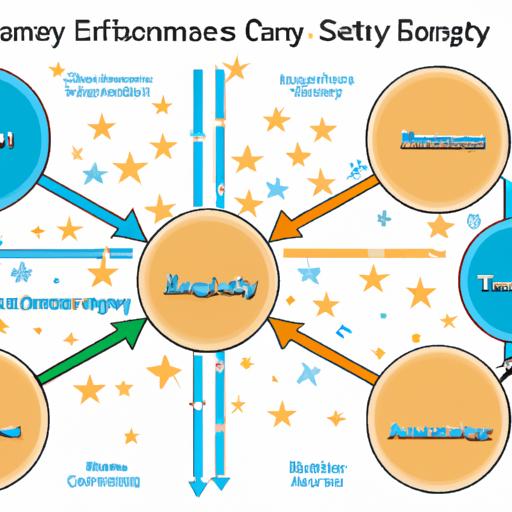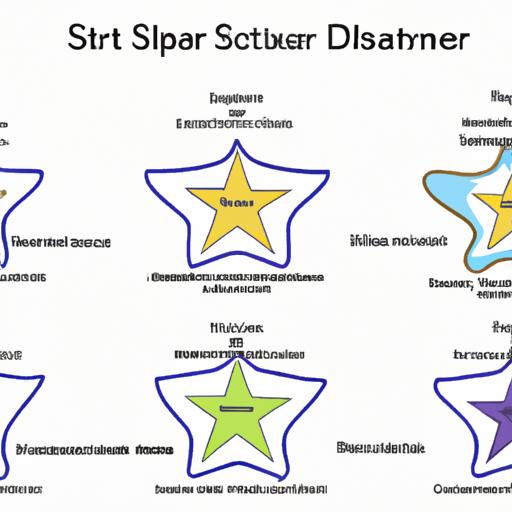In the ever-evolving world of data management and analysis, the concept of star schema in data warehousing has emerged as a powerful tool. With its ability to simplify complex data structures and enhance query performance, star schema has become an essential component of modern data warehouses. In this article, we will explore the intricacies of star schema, its advantages, and best practices for its implementation.

Key Characteristics of Star Schema
A star schema revolves around two main components: dimension tables and a fact table. Dimension tables contain descriptive attributes that provide context to the data, while the fact table holds the measurable and numerical data. This structured approach allows for efficient data retrieval and analysis.
Primary and foreign keys play a crucial role in maintaining the relationships between the tables within the star schema. Primary keys uniquely identify each record in a dimension table, while foreign keys establish connections between dimension tables and the fact table. This relationship ensures data integrity and consistency.
In addition to primary and foreign keys, denormalization is another significant characteristic of star schema. Denormalization involves duplicating certain data across tables to eliminate the need for complex joins. This denormalized structure enhances query performance by reducing the number of table scans needed for analysis.

Advantages of Implementing Star Schema in Data Warehouses
Implementing star schema in a data warehouse offers several advantages that contribute to efficient data analysis and reporting.
Simplified Data Analysis and Reporting
Star schema simplifies the process of data analysis and reporting by providing a clear and intuitive structure. Analysts can easily navigate through dimension tables to access specific attributes relevant to their analysis. This simplicity enables faster and more accurate decision-making based on the insights derived from the data.
Enhanced Query Performance and Faster Data Retrieval
The structure of star schema, with its denormalized design, significantly improves query performance. By reducing the number of table scans and complex joins, queries execute faster, resulting in rapid data retrieval. This speed is particularly crucial when dealing with large datasets, enabling timely responses to business inquiries.
Scalability and Flexibility for Future Data Integration
Star schema offers scalability and flexibility for future data integration. As new dimensions and measures emerge, they can be easily added to the existing schema without disrupting the structure. This adaptability ensures that the data warehouse can accommodate evolving business requirements and incorporate new data sources seamlessly.
Improved Data Quality and Consistency
With its structured design, star schema promotes data quality and consistency. By eliminating data redundancy and enforcing referential integrity through primary and foreign keys, the schema ensures data accuracy. This reliability is vital for making informed business decisions and building trust in the data warehouse’s outputs.

Best Practices for Designing and Implementing Star Schema
To maximize the benefits of star schema, it is essential to follow best practices during the design and implementation phase.
Proper Identification and Selection of Dimensions
Careful identification and selection of dimensions are crucial for an effective star schema. Dimensions should represent the key aspects of the business and provide meaningful context to the data. It is important to choose dimensions that are relevant, comprehensive, and aligned with the organization’s goals and objectives.
Choosing Appropriate Data Types and Granularity
Choosing appropriate data types and granularity for dimensions and facts is vital for accurate analysis. The data types should accurately represent the attributes they store, ensuring compatibility with the analytical tools used. Granularity determines the level of detail captured in the schema, and striking the right balance is crucial to avoid unnecessary complexity or loss of valuable information.
Establishing Relationships and Ensuring Referential Integrity
To maintain the integrity of the star schema, establishing relationships between tables and ensuring referential integrity is essential. Foreign keys should accurately link dimension tables to the fact table, enabling seamless navigation and analysis. Regular audits and validations should be performed to identify and rectify any inconsistencies or data integrity issues.
Handling Slowly Changing Dimensions and Maintaining Historical Data
In real-world scenarios, dimensions may undergo changes over time. It is important to handle these changes, known as slowly changing dimensions, effectively. Various techniques such as Type 1, Type 2, or Type 3 slowly changing dimension methods can be employed to manage historical data and capture the changes accurately.
Conclusion
In conclusion, star schema in data warehousing offers a structured and efficient approach to data analysis and reporting. By leveraging dimension and fact tables, star schema simplifies complex data structures, enhances query performance, and improves data quality. By adhering to best practices during the design and implementation phases, organizations can maximize the benefits of star schema and build robust data warehouses capable of delivering valuable insights. Implementing star schema is a valuable investment for businesses seeking to derive actionable intelligence from their data.